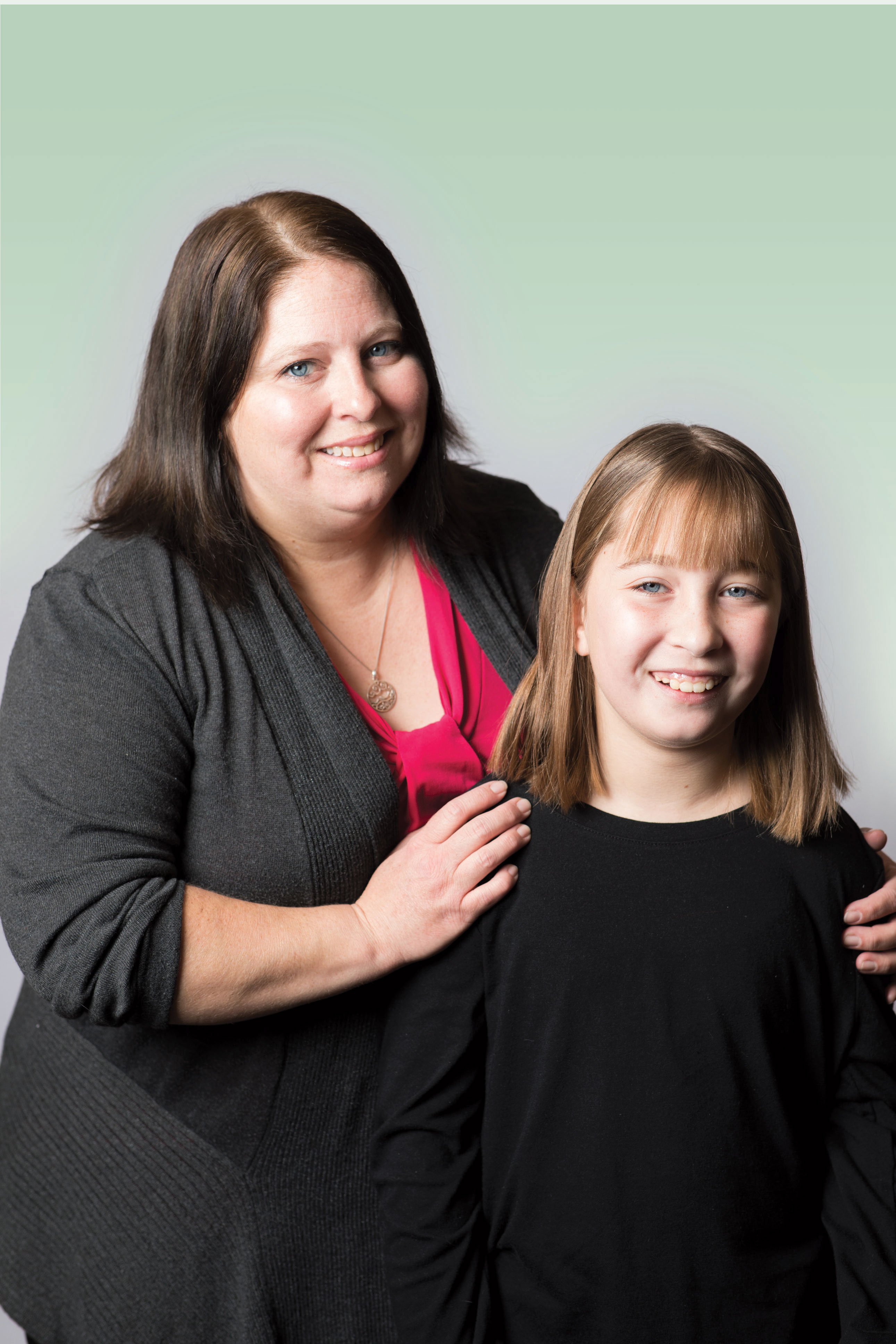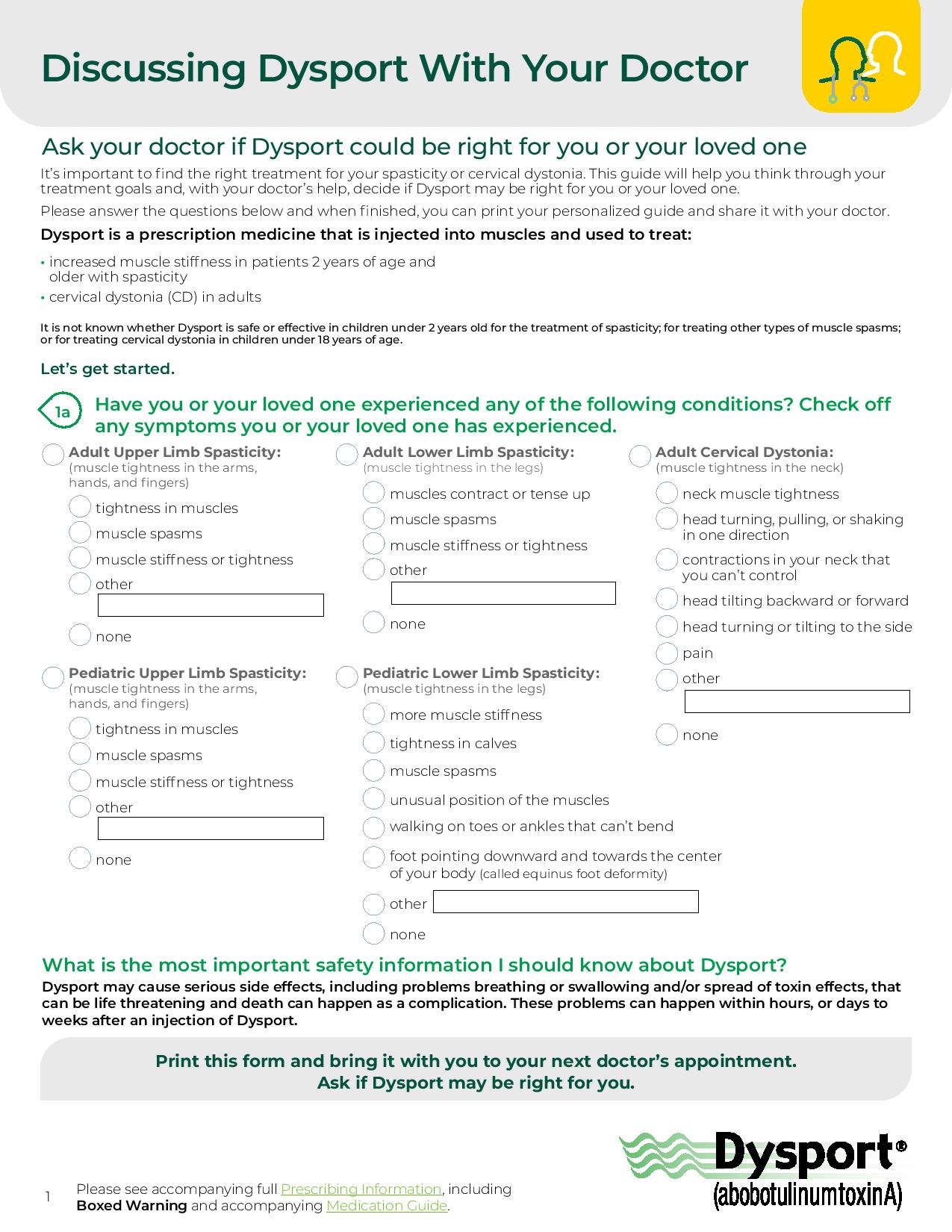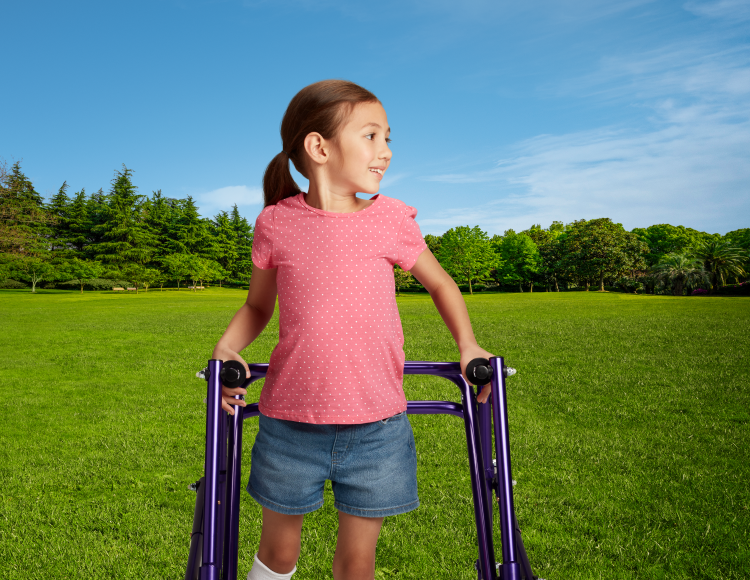
“Your muscles get tight, your hips pop. Getting in and out of the car can be difficult. It makes running and playing harder, it slows me down.” Annika
“Spasticity affects everything. How fast she walks, how much she trips, how fast she gets tired.” Wendi talking about Annika’s lower limb spasticity
Lower limb spasticity
Lower limb spasticity involves the muscles in the legs, feet, and toes.
The tightness in those muscles may cause legs, ankles, and feet to bend or turn (see below):
What causes spasticity?
Spasticity is caused by damage to parts of the brain that control movement, which results in some of your child’s muscles to be uncontrollably tight or stiff.
The damage can be caused by a traumatic injury (a head injury) or by another condition. One of the most common causes of spasticity in children is cerebral palsy; nearly two-thirds of children with cerebral palsy will present with upper or lower limb spasticity.
Spasticity can severely disrupt a child’s life by impacting basic daily movements and activities like speech and the ability to walk. For kids dealing with spasticity symptoms, activities like getting dressed in the morning or navigating the playground can be challenging.

What causes spasticity?
How is spasticity managed?
There are several different options that can help manage spasticity in children:
- Baclofen pump – an implantable pump that allows for direct delivery of a muscle relaxer into the fluid surrounding the spinal cord
- Occupational or physical therapy – stretching and strengthening muscles to improve coordination, range of motion, and mobility
- Oral medicines – used to relax muscles and diminish spasticity
- Botulinum toxin medicines – injections of a toxin into the muscles that need to be relaxed to help improve stiffness
- Surgery on nerves near the spinal cord – performed to relax muscles involved in the spasticity
- Splints or casts for arms and legs – used to correct muscle imbalance and abnormalities and increase mobility
Work with your child’s doctor to decide which treatment (or combination of treatments) best suits you and your child’s needs. To help prepare for your next visit, you can find additional resources here
Note: It is common to use more than one treatment to manage spasticity in children.

Managing Spasticity
What are common goals and expectations when managing spasticity?
Improved ability to care for your child’s affected limb(s)
- Clenched fists or curled toes can be difficult to clean.
Improved everyday (active) function
- Ideally, you want your child to participate in daily activities with limited pain from spasms or difficulty moving
Relief from pain related to muscle stiffness
- Managing the ability to relax muscles and lessen painful spasms
Improvement in mobility
- Improving movement and the use of affected limbs after therapy is a common goal of spasticity treatment
Setting management goals
In helping to manage your child’s spasticity, it’s very important to set goals. Tracking these goals can help you and your child’s doctor monitor how well the treatment is working and adjust it as your child’s needs evolve.
In addition to working with your doctor and the care team, make sure to involve your child in the discussion and allow them to contribute when setting treatment goals.
Note: When using an injection as part of a management approach for spasticity, the amount of medicine injected as well as the muscles that are injected can change. It all depends on how well your child responds to the medicine. Your child’s doctor will monitor their progress closely to determine whether to make these adjustments. Using goals to track progress can help this process.
Helpful hints for goal setting
- Are they specific? Tommy wants to dress himself in the mornings.
- Are they measurable? Which items of clothing does he struggle to put on, and does putting them on become easier with treatment?
- Are they realistic? Is this goal achievable, taking into account Tommy’s level of muscle stiffness? Would a less challenging goal suit him better?
- Do they have an end date? Is there a specific time by which Tommy would like to be able to consistently dress himself in the morning?
![]()
Goals & Expectations
Take action! Don’t hold back:
Become a partner with your child’s doctor and treatment team by learning all the options to help your child
This may include working with a physical and/or occupational therapist to help loosen the affected area
Set goals but be open to making adjustments as needed
Doctor Discussion Guide

This guide will help you think through your treatment goals and, with your doctor’s help, decide if Dysport may be right for you or your loved one.
Find a Provider
Learn more about Children with Spasticity (Aged 2 Years & Older)
IMPORTANT SAFETY INFORMATION
What is the most important safety information I should know about Dysport?
Dysport may cause serious side effects, including problems breathing or swallowing and/or spread of toxin effects, that can be life threatening and death can happen as a complication. These problems can happen within hours, or days to weeks after an injection of Dysport.
- Problems swallowing, breathing, or speaking. Treatment with Dysport can result in swallowing or breathing problems. People with pre-existing swallowing or breathing problems may be at greater risk following treatment with Dysport. Swallowing problems may last for several weeks; you may need a feeding tube to receive food or water. If swallowing problems are severe, food or liquids may go into your lungs.
- Spread of toxin effects. The effects of botulinum toxin may affect areas of the body away from the injection site and cause symptoms of a serious condition called botulism which include: loss of strength and muscle weakness all over the body, double or blurred vision, and drooping eyelids, hoarseness or change or loss of voice, trouble saying words clearly, loss of bladder control, and trouble breathing or swallowing. The risk of these symptoms is probably greatest in children treated for spasticity. These problems could make it unsafe for you to drive a car, operate machinery, or do other dangerous activities.
Call your doctor or get medical help right away if you experience these problems after treatment with Dysport.
Do not receive a Dysport injection if: you are allergic to Dysport or any of its ingredients, or cow’s milk protein; you had an allergic reaction to any other botulinum toxin product, such as Myobloc®, Botox®, or Xeomin®; or you have a skin infection at the planned injection site.
Before you receive a Dysport injection tell your doctor:
- About all your medical conditions, including if you have a disease that affects your muscles and nerves (such as ALS or Lou Gehrig’s disease [amyotrophic lateral sclerosis], myasthenia gravis, or Lambert-Eaton syndrome). You may be at increased risk of serious side effects, including difficulty swallowing or breathing.
- If you have or have had any of the following: a side effect from any botulinum toxin in the past; problems with breathing such as asthma or emphysema; swallowing; bleeding; diabetes; and slow heartbeat, or problems with your heart rate or rhythm.
- If you have plans to have surgery, had surgery on your face, have weakness of your forehead muscles (trouble raising your eyebrows), drooping eyelids, or any other change in the way your face normally looks.
- If you are pregnant or breastfeeding or plan to become pregnant or breastfeed. It is not known if Dysport can harm your unborn baby or if it passes into breast milk.
- About all the medicines you take, including prescription and over-the-counter medicines, vitamins, and herbal products. Using Dysport with certain other medicines may cause serious side effects. Do not start any new medicines until you have told your doctor that you have received Dysport in the past.
Especially tell your doctor if you have received any other injections of botulinum toxin in the last four months or ever; Myobloc®, Botox®, or Xeomin® (exactly which ones); an antibiotic recently by injection; or if you take muscle relaxants; allergy, cold or sleep medicine.
Most Common Side effects of Dysport in:
- adults with lower limb spasticity include: fall, muscle weakness, pain in your arms or legs.
- adults with upper limb spasticity include: muscle weakness.
- children (2 to 17 years of age) with upper limb spasticity include: upper respiratory infection and sore throat.
- children (2 to 17 years of age) with lower limb spasticity include: upper respiratory infection, stuffy or runny nose and sore throat, cough, and fever.
- adults with cervical dystonia include: muscle weakness, difficulty swallowing, dry mouth, injection site discomfort, tiredness, headache, muscle pain, problems speaking, injection site pain and eye problems.
Tell your doctor if you have any side effect that bothers you or that does not go away. These are not all the possible side effects of Dysport. For more information, ask your doctor or pharmacist. You may report side effects to the FDA at www.fda.gov/medwatch or call 1-800-FDA-1088.
What is Dysport?
Dysport is a prescription medicine that is injected into muscles and used to treat:
- increased muscle stiffness in patients 2 years of age and older with upper and lower limb spasticity
- cervical dystonia (CD) in adults
Please see full Prescribing Information including Medication Guide with Important Warning.
Botox, Xeomin, and Myobloc are registered trademarks of their respective owners.

